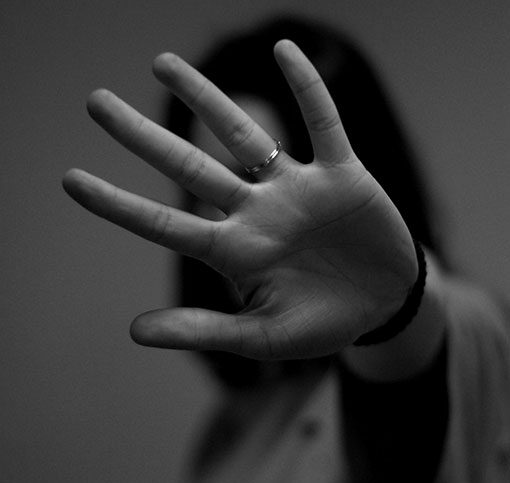June 18, 2020 |

You would think having a company dress code would be an easy matter, but that isn’t always the case. With so much emphasis placed on equality in the workplace, you have to be careful that you do not discriminate. This discrimination could take the form of gender differences, cultural differences, or religious differences. Let’s explore the matter of dress codes further.
Types Of Dress Codes For The Workplace
There are several categories of dress codes. Most companies will mention them when they hire an employee. Sometimes, the difference is subtle and can be confusing. The main dress code styles are:
Business Formal
Think matching suit in muted or dark color. Men should have pants and matching suit jackets and a white, beige, or light blue collared shirt. A tie is also required. Men should also wear dress socks, not white ones. Women can wear a pantsuit, dress, or skirt. Color should not be too bright and nothing should be revealing. Any skirt should be at or just below knee length.
Business Professional
This is similar to Business Formal, but there is a bit more leeway. A man may get away with a simple blazer and shoes that are good but not fancy. Women are more likely to be allowed to forgo wearing a jacket with their pants and tops. Think bank or accounting office style here.
Business Casual
Men can drop the tie and jacket here. Appropriate attire consists of dress pants or khakis for men, a button-up shirt or sweater is also okay. Dress shoes finish things off. Women can wear dress pants or a skirt and a blouse or sweater with comfortable shoes. Dresses are also appropriate.
Casual
This style typically allows for good-looking jeans or khakis. Women may also be allowed to wear jeans. Shirts are often polo, button-up, pullover, or a sweater. Comfortable shoes are permitted. All clothing should be stain and tear-free, and wrinkles are not appropriate. Otherwise, comfort is the keyword.
Items of Clothing Often Considered Inappropriate
Some items of clothing are inappropriate for any business environment. These things usually fall into the category of looking messy, unprofessional, or even dangerous. Let’s look at some specific examples:
-
Slogans or Pictures on T-shirts: T-shirts aren’t generally allowed except in a casual workplace, but slogans and pictures can be offensive. Sexual content is an obvious no, but wearing something with a political slogan may cause arguments, religious quotes can seem offending to the non-religious, and pictures can fall into the same category.
-
Tattered Jeans: These look messy and unprofessional. The current fashion of “distressed” jeans comes to mind here. They show areas that are usually covered and make the wearer look like they aren’t taking the position seriously.
-
Extremely Baggy Pants or Shorts: These often show underwear and always need pulling up. They convey a subconscious idea of the person being unprofessional.
-
Revealing Attire: This includes women and men. You are there to work, not attract a partner. Revealing clothes can be distracting, and the focus isn’t on the skills of the person wearing these things. Leave tight pants, low cut shirts, and anything revealing your belly button at home.
-
Undergarments: This doesn’t require explaining. They are called undergarments for a reason and should never be shown in the workplace.
-
Loose Footwear: The biggest problem with this is that it causes the wearer to stumble and trip. Accidents that require medical care could occur.
-
Sweatsuits: Sweatsuits simply look unprofessional, and the person who wears them won’t be taken too seriously by either co-workers or clients.
- Facial Piercings: This is something that is getting a bit laxer, but there are still very few places that allow any facial piercings. A more conservative place may restrict ear piercings to one hole per ear in women and none for men. In many situations, men may wear a small earring in one ear, and a few places allow a little gem in a nose, but that is still considered taboo in most settings.
Mind The Laws Affecting Dress Code Policy
A dress code policy must not discriminate against members of protected groups. These groups include racial, religious, gender, and disabled groups. In many cases, the things you must allow are easy to put into place.
Racial Discrimination
Anything that discriminates against a person based on racial criteria is forbidden. In some communities, hairstyles are considered a matter of pride and were recently added to a list of protected areas in the state of California.
Create A Logical Policy
Consider a policy about hygiene. You can require your employees to follow a rule about no beards or other facial hair because they can harbor bacteria. However, should a person have cornrows, which is a cultural choice, you can’t make the person cut their hair. You may ask them to wear their hair up while at work, such as putting a band around the cornrows to keep them neat and in place.
Disability Discrimination
Disabilities come in many types. You would make adjustments in the workplace for things like wheelchairs, but what about some of the lesser experienced limitations, such as a person wearing a colostomy bag? These need to be taken into account when writing your dress code policy.
Provide Reasonable Accommodation
In the example above, you may have a uniform policy. Every employee may be required to wear a uniform, but the outfit may interfere with easy access to the colostomy bag. Another example would be an employee with a thyroid problem who is too large to fit in any of the uniforms available. In these cases, it is considered a correct policy to allow the employee to wear clothing that matches the outfit as closely as they can.
Gender Discrimination
Gender discrimination is a big problem for many places today. Not only must you take into account the male/female equality, but you almost consider transgender individuals. For example, if dresses are allowed in the workplace, a transgender female must be permitted to wear one.
Implement To All Employees
An excellent way to determine if a rule in the dress code is legal is to ask yourself if the practice pertains to everyone. You can’t force women to wear high heels if men aren’t also required to wear them.
Sexual Harassment
Sexual harassment is also a problem you must consider. Any clothing requirements that make someone feel uncomfortable are inappropriate.
Adopt An Appropriate Dress Code
You must take into consideration both genders when making your policy. For example, you can’t have men buttoning their shirts all the way but require the women to leave a button or two open.
Understanding Your Employees’ Religion
Some religions require beards or people to wear a specific type of clothing or hats such as turbans or hijabs. Learning the faith of each employee before enforcing a dress code policy helps avoid religious discrimination complaints. This knowledge will help you in more ways than just the dress code.
Reasonable Accommodations
An employer can make reasonable accommodations when it comes to their dress code policy. It is alright to make exceptions for employees who need to express their religious beliefs and still establish their dress code policy on the rest of the staff.
Aspects Protected From Religious Discrimination
There are a few exceptions where employers can insist on their dress code or have the employee transferred to a different department. These situations, however, do not come up often. They can include:
-
The item breaches health and safety policies.
-
The religious item is worn only for fashion.
-
The accommodation causes undue hardship on the operation of the business.
Exceptions to the Rule
As with any problems in the workplace, discretion must prevail.
-
Observe the employee. Is there a problem?
-
Address the issue privately. Call the employee aside and explain what the dress code policy is and why they are violating it.
-
If the majority of employees can go home, change clothes, and return in a short time, the policy should encourage them to do so, especially if this is the first violation.
-
If the employee cannot go home or would take a reasonable amount of time, decide whether to send the employee home with or without pay.
-
Document the behavior. That way, you can take more drastic measurements if the same employee continues to violate the rules.
Handling Dress Code Violations
Creating a safe environment on all levels is essential for a situation where the employees can concentrate on their work. An appropriate dress code policy can be professional and make the company look good while considering employee feelings as well.
Need help with creating policies or planning accommodations?
Contact us today?
Make a great first impression at your next job interview.
BROWSE OUR JOB BOARD TODAY!
This blog post is intended for informational purposes only and does not constitute legal advice. No attorney-client relationship is created between the author and reader of this blog post, and its content should not be relied upon as legal advice. Readers are urged to consult legal counsel when seeking legal advice.








